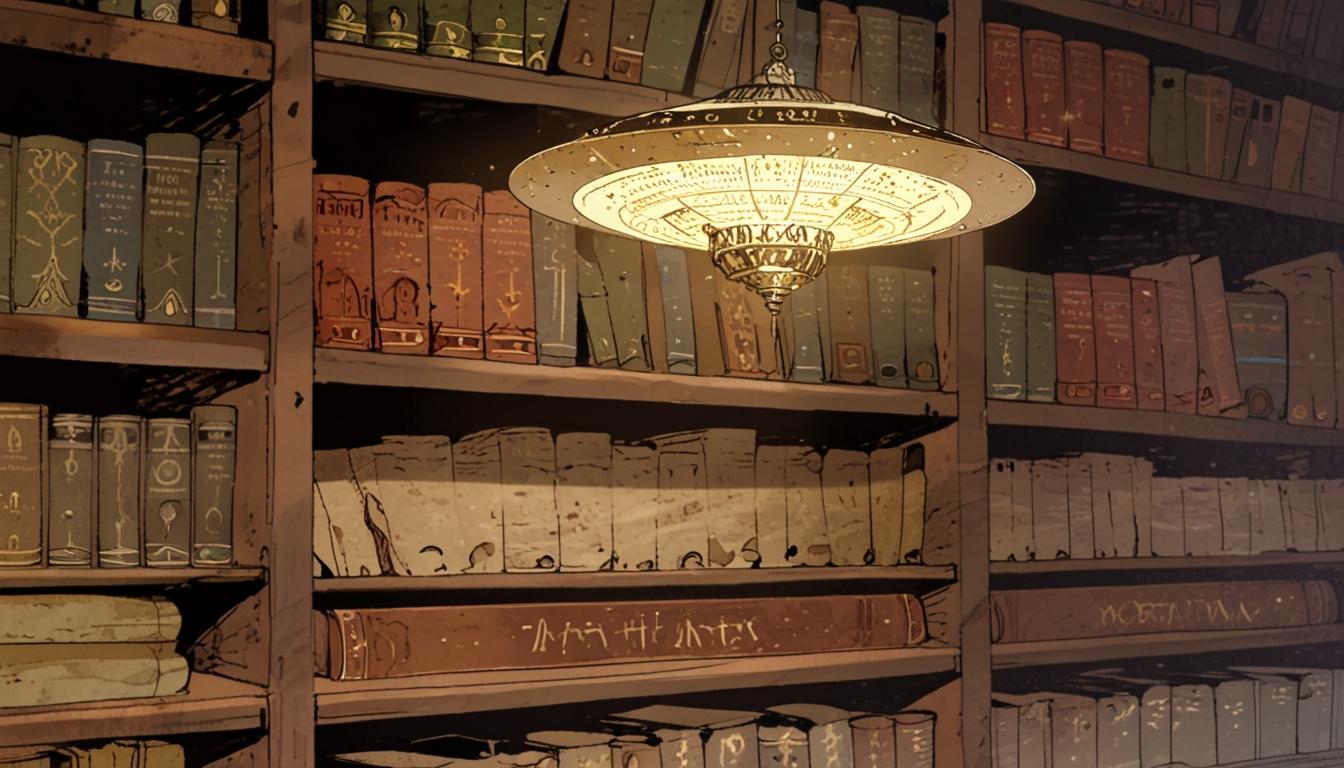Calls for Transparency: UFO Theories and the Vatican Archives
In the wake of Pope Francis's recent passing, a wave of curiosity has surged among UFO activists who are urging the Vatican to open its highly secretive archives. This repository, which many believe to be a treasure trove of suppressed knowledge, is thought to contain long-hidden evidence that may link the Catholic Church's historical narratives to extraterrestrial visitations and phenomena often misinterpreted as divine visions.
Prominent among those raising their voices is David Grusch, a former Pentagon official turned whistleblower. Grusch has suggested that not only does the Vatican hold crucial data regarding alien life, but it has actively concealed this information for decades. Such assertions have only added to the widespread intrigue surrounding the Vatican's archives.
A key figure exploring these claims is Diana Walsh Pasulka, a professor of religious studies at the University of North Carolina Wilmington. In her work, particularly the book American Cosmic, Pasulka delves into historical documents from the Church, revealing accounts that, to modern eyes, resonate startlingly with contemporary UFO reports. One of her significant findings includes testimonies from the 17th century, where nuns reported seeing 'orbs of light' and 'luminous beings.' She stated, “The historical record is filled with these kinds of events. The people at the Vatican, they don't even know where to look - it's in their basements."
The Vatican Apostolic Archives, established formally by Pope Paul V in 1612, is an expansive collection estimated to contain over 50 miles of shelving that includes papal correspondence and historical records. Some suggest that these documents may also touch on evidence of alien life. According to Pasulka, while the Vatican's archivists scramble to digitize centuries-old records, more peculiar accounts related to extraterrestrial phenomena seem to remain sidelined.
One particularly striking case documented by Pasulka involves Sister Maria of Ágreda, a 17th-century Spanish nun who claimed extraordinary experiences, including levitating in light and bilocating to meet Indigenous peoples in the Americas while never stepping outside her convent. Such narratives blur the lines between spiritual and extraterrestrial experiences, leading Pasulka to refer to Sister Maria as a 'meta experiencer.' The nun’s writings, although destroyed by her peers, raised eyebrows with descriptions that almost eerily mirror modern-day UFO encounters.
Speculation about the Vatican’s knowledge of extraterrestrial incidents has been fuelled further by Grusch’s claims regarding a supposed 1933 UFO crash in Northern Italy. He alleges that this incident, involving a spacecraft reportedly hidden by Benito Mussolini's regime, was ultimately relayed to the United States with the assistance of Pope Pius XII. Though Grusch's testimonies lack tangible evidence and have been dismissed by the Vatican as unfounded, they add a tantalising layer to the narrative that has captivated both believers and sceptics alike.
Moreover, historical events such as the 1917 Fatima incident, which saw thousands of witnesses proclaim miraculous visions of the Virgin Mary, reflect a complex interplay between faith and modern interpretations that some researchers assert could align with alien encounters. In light of these parallels, Pasulka posits a need for a nuanced perspective: “One cannot put an angel under a microscope. It is this aspect – the mysterious sacred – that distinguishes religion from other organized practices.”
As demands for transparency from the Vatican grow louder, the future of the archives remains uncertain. Grilli, the Vatican's chief archivist, has firmly denied any existence of documents concerning extraterrestrial life within the archives. Nevertheless, the blend of history, faith, and the possible presence of phenomena beyond our comprehension continues to fuel speculation and debate. Advocates for openness argue that unveiling the archives could reshape our understanding of the relationship between humanity and the cosmos.
In a world increasingly fascinated by the unknown, the intersection of religion, history, and UFO lore poses intriguing questions about what truths may still lie hidden in the shadows of the Vatican's extensive collections. As the call for access intensifies, only time will tell whether these ancient records will shed light on humanity's enduring quest to understand our place within the universe.
Reference Map:
- Paragraph 1 – [1], [4]
- Paragraph 2 – [1], [2], [3]
- Paragraph 3 – [1], [2], [3], [5]
- Paragraph 4 – [1], [4], [5]
- Paragraph 5 – [1], [2], [3]
- Paragraph 6 – [1], [5], [7]
Source: Noah Wire Services
